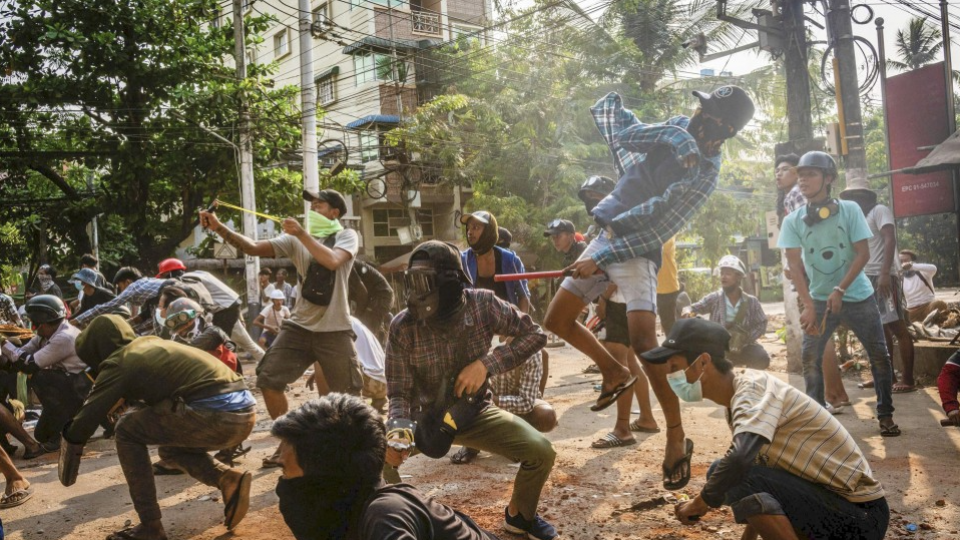
* Ardeth Maung Thawnghmung is Professor and Chair in the Department of Political Science and Interim Director of Peace and Conflict Studies at the University of Massachusetts at Lowell. Many groups and organisations can be expected then to bandwagon with the stronger party.
A tipping point may occur in favour of either side, depending on the additional resources or support that it obtains, either from other domestic actors or from international actors and defectors from the other side. In the short term, Myanmar’s military is intent on intensifying repression against the anti-coup movement should it adopt more comprehensive and diverse strategies. Myanmar appears stuck in a scenario marked by chaos where the military and the protest movement each attempt to steer the situation towards their own optimal outcomes. For protesters it is either a return to the pre-coup status quo and the exile of leading generals, or complete civilian control of the military and a federal democratic regime.  The best for the military is one featuring two-year or indefinite military rule. Nine scenarios - based on the objectives of different players, their attempts to influence the nature and direction of the crisis, and the interaction of strategies employed by the military and the protest movement - are possible. Neither the military nor the protest movement can be certain of the current crisis’ ultimate outcome.
The best for the military is one featuring two-year or indefinite military rule. Nine scenarios - based on the objectives of different players, their attempts to influence the nature and direction of the crisis, and the interaction of strategies employed by the military and the protest movement - are possible. Neither the military nor the protest movement can be certain of the current crisis’ ultimate outcome.  While the generals who overthrew Myanmar’s elected government on 1 February envisioned a swift, smooth and bloodless action, they have increasingly resorted to repressive and brutal measures to try to bring overwhelming public resistance under control. Here, protesters take part in a demonstration against the military coup in Yangon on March 11, 2021. Neither the military nor the protest movement can be certain about what the ultimate outcome of this present crisis will be.
While the generals who overthrew Myanmar’s elected government on 1 February envisioned a swift, smooth and bloodless action, they have increasingly resorted to repressive and brutal measures to try to bring overwhelming public resistance under control. Here, protesters take part in a demonstration against the military coup in Yangon on March 11, 2021. Neither the military nor the protest movement can be certain about what the ultimate outcome of this present crisis will be.






 0 kommentar(er)
0 kommentar(er)
